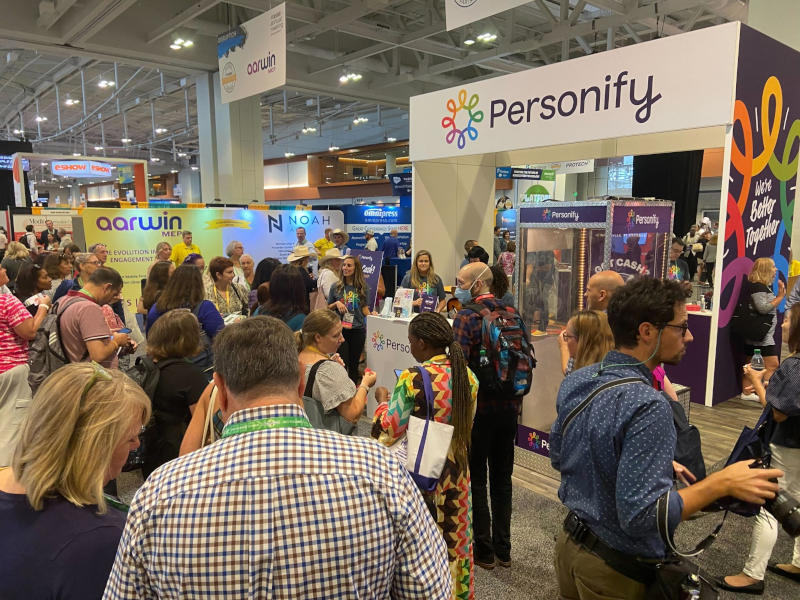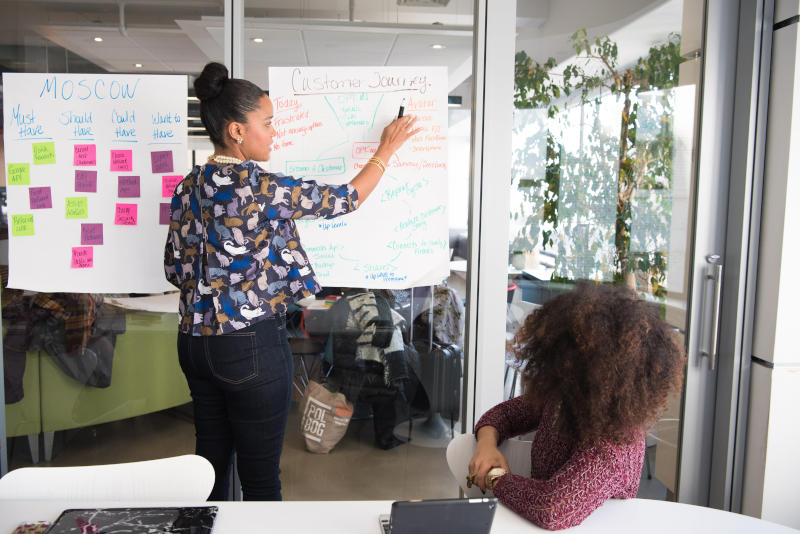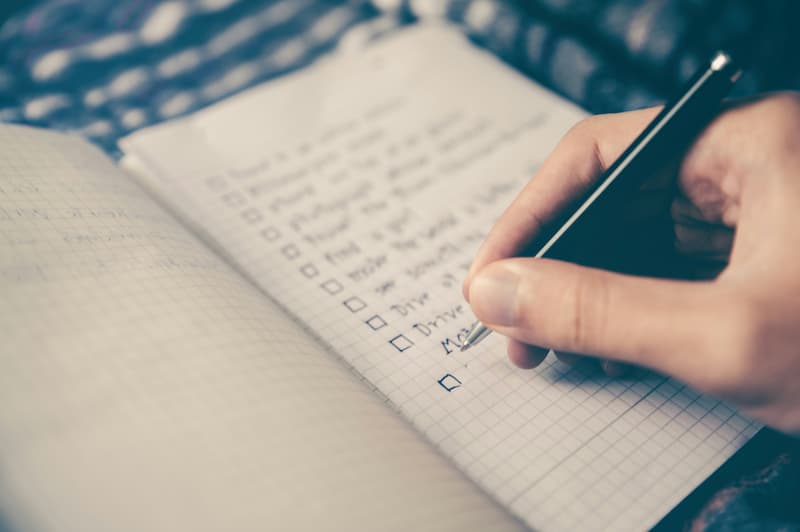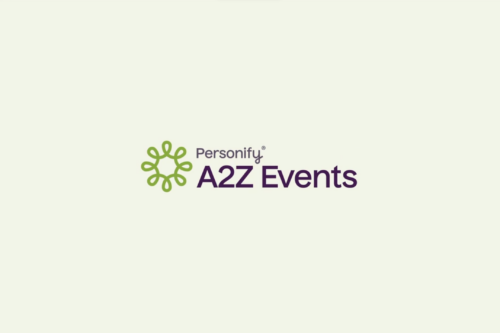Once your last attendee leaves and your final exhibitor finishes packing up their materials at your trade show, it is easy to breathe a sigh of relief and consider yourself finished with your project. However, there is one final step that you do not want to neglect: post-event exhibitor trade show surveys.
These surveys are critical for measuring the success of your trade show and your ability to plan even better ones in the future. The insights you gain from this survey will help you know what to keep and what to adjust for future events. Taking the time to ask these questions of your exhibitors will also strengthen relationships with these critical participants, as you demonstrate to them that you genuinely care about their experience and you want them to achieve their goals as well.
We will walk you through some key questions that can help you build a successful post-event survey and best practices for writing one for your trade show.
Why a Post-Event Exhibitor Trade Show Survey is Essential

To help you understand why creating these surveys should be such a central part of your trade show strategy, let’s first explore some key benefits to collecting this data.
Measuring Exhibitor Satisfaction and ROI
Knowing whether or not your exhibitors met their goals is a key criterion for determining your overall event success. Happy exhibitors are likely to come back to future trade shows. When people feel positively about the overall event, it also indicates that they engaged well with attendees. Strong indications of engagement, coupled with your own metrics, help you see how well you aligned your audience and your exhibitors.
Identifying Strengths and Weaknesses of the Event
As you collect data from your trade shows, the trends and statistics will give you greater insight into improving your logistics, marketing, and attendee engagement strategies. You can learn how smoothly people thought the event went, which can zero in on potential problems with your logistics. Alignment between attendees and exhibitors rates can help you monitor your marketing and see how well you reached the ideal audience for your event. Finally, evaluating engagement with your attendees will help you strategize how to better structure your event and keep your attendees interested.
Strengthening Exhibitor Retention and Future Participation
Finally, you want to keep your exhibitors returning to future events. Building a strong base for your events will increase future participation and can help you attract more exhibitors and attendees.
However, to keep your exhibitors coming back, they need to feel as though the event was a success. They also want to know whether your business cares about them and their experiences. Demonstrating how you prioritize their goals as exhibitors can lay the foundations for strong partnerships that will grow your base.
Key Post-Event Survey Questions to Ask Exhibitors

Let’s walk through some core post-event survey questions that you will want to ask your exhibitors as you start to build your surveys.
Overall Event Experience
Start with questions that ask your attendees about their overall experience. Rating scale-style questions work well for this part. You might ask:
- How satisfied were you with the event overall?
- How well did the event meet your expectations?
Asking people to rate their experience on a scale of 1-5 or 1-10 can help you get a better feel for overall impressions.
Booth Performance and Lead Generation
As we already discussed, you also want to prioritize learning how well your exhibitors met their goals for the trade show. This will impact their likelihood of returning. Depending on the questions you ask, these questions can be answered with a yes or no, multiple choice options, or rating scales. Some examples of questions you may include might be:
- Did you achieve your primary goals for exhibiting?
- How would you rate the quality of leads generated?
- How satisfied were you with attendee engagement at your booth?
These questions can also be paired with follow-up questions about how well the audience aligned with their business, and if they had any suggestions for what might help them improve their ability to attain their lead generation goals at a future event. Remember that exhibitors appreciate you paying attention to their priorities and goals.
Event Organization and Logistics
Event logistics play a central role in your overall event success as well. It is easy to overlook how people feel about your logistics, but shortcomings here can easily lead to frustration and other negative feelings throughout the event, even if everything else is managed well.
These questions often work well when asked as multiple choice questions or rating questions, with potential follow up questions about suggestions your exhibitors might have for the future.
- How would you rate the exhibitor registration and booth setup process?
- Did you receive adequate support from the event organizers?
- How would you rate the venue, layout, and accessibility?
These questions help you really dig into people’s experiences during your event. Including these questions will help you dial in effectively to any annoyances or obstacles your exhibitors might have faced as they prepared for your show.
Marketing and Promotion Effectiveness

When you market your trade show, the attendees you attract will also directly impact your exhibitors. Therefore, including questions about your marketing and how well your exhibitors thought it targeted the right audience and attracted the optimal visitors will help you plan campaigns for future trade shows.
Ask questions to gauge people’s opinion on your marketing through rating and multiple choice questions such as:
- Was the event sufficiently promoted to attract the right audience?
- How effective were the pre-event marketing opportunities offered?
If you then couple this insight with your audience engagement numbers and statistics from your marketing campaigns, you will walk away with powerful insights into the effectiveness of your promotional strategy and how well it attracted the audience your exhibitors wanted to see.
As you probe into people’s opinions of your marketing strategies, you might also ask how they felt regarding co-marketing opportunities. For example, many sponsorship packages include opportunities to get their logos and brand names on merch and marketing materials. You might ask their opinion on the quality of these opportunities.
Trade shows might also run campaigns where they connect with prominent brands that will exhibit at the event and work with them to create campaigns that promote the event and the brand itself. Collecting data about people’s perceptions of these promotional efforts can also help you plan the types of campaigns you want to run in the future and the opportunities you might offer sponsors.
Future Participation and Recommendations
Finally, some of the best questions you can ask your exhibitors have to do with their likelihood of returning. Exhibitors who are indifferent or negative to the idea of returning did not walk away from your event feeling as though it met their needs, which can help you find potential obstacles to participation. Conversely, those who will come back give you a thumbs up that says your event did provide them with positive ROI and a good experience.
These types of questions often work well as open-ended questions. This gives your respondents the flexibility to express their genuine feelings instead of providing you with the answer that ‘most closely’ expresses their opinion. Since you want to identify exactly why people do or do not want to return, collect optimal answers from your attendees.
Of course, one of the biggest problems brands face with open-ended questions is determining how to collect meaningful data from the information. Tools that help you find common keywords and phrases and identify overall sentiment are a good place to start. You might also have team members look at some of the responses individually, particularly those that come from high-value attendees.
To get started building this portion of your survey, we recommend you ask questions such as:
- Would you exhibit at this event again, and include why or why not?
- What changes or improvements would make the event more beneficial for exhibitors?
- Are there additional services or resources you’d like to see in future events?
Best Practices for Crafting an Effective Post-Event Survey

Now that you have some ideas about the types of questions you want to ask, you want to prioritize convincing people to fill it out. Let’s walk through some important best practices that will help you build effective surveys that collect the data you need and help you get the results you want to see.
Keep It Short and Relevant
First, remember that people do not want to spend a lot of time answering your post-event survey. They are happy to offer their opinion and are glad that you care, but you still have to make the survey itself appealing. Something that is long or intensive to complete will discourage people from finishing it.
Concise surveys will increase your completion rates. Consider the areas about the trade show that you want to collect data for the most and prioritize these questions for your surveys. If you have a variety of areas you want to collect data, you might consider crafting two versions of your survey and sending them to randomized groups.
Use a Mix of Question Types
Different types of questions will help you collect different types of valuable information. Open-ended questions, for example, give exhibitors a chance to express their own thoughts without the confines of preselected answers, as in a multiple-choice question. However, they also require more effort from the attendees.
On the other hand, multiple choice questions or rating scales might restrict people more in their responses, but they are easier for people to answer quickly and they lend themselves nicely to data analysis.
Generally, you want to have a balanced mix of your question types. For example, you might ask questions about the attendee experience and then have open-ended questions about what they liked or didn’t like. This provides a balance while also looking at how exhibitors felt about your event from a variety of angles.
Rating systems also work well in situations where you want people to rank choices, such as their likelihood of returning to your trade show a future year or how strongly they agree or disagree with statements about the event. They make great options for questions that help to summarize overall impressions of your event.
Structure all the questions so that you also mix them up throughout the survey. Stacking all the open ended questions together might encourage people to quit, even if they were very close to completing the questions.
Offer Incentives for Feedback
Consider also if offering perks for survey competition might be a good strategy for your business. These perks can come in a variety of different forms such as:
- Discounts on products or future events
- Exclusive perks, such as gift cards, merch, or consultations
- Future booth upgrades for those who return to future events.
These perks give them a little extra boost to push them to complete the survey, which will improve the validity of the data you collect through a larger sample size. It will also further nurture your relationship with the exhibitor. These different perks all encourage them to continue to engage with your brand and even return for future events.
Act on Insights and Communicate Changes
Finally, remember that the reason you collect all this data is to better understand your exhibitors and improve the experience you offer them. Therefore, making concrete, quantifiable changes based on audience feedback is critical. For example, if people found the space too cramped, advertising a larger new venue would be an asset.
Regardless of the types of changes you make based on user feedback, make sure you let people know about these changes and why. If they have been frustrated by something, knowing you have taken steps to improve the situation will encourage them to return. Also, everyone who hears about this shift will be pleased to know that you take feedback from your exhibitors and their responses to surveys seriously. Your commitment to their experience will help further nurture positive relationships with everyone involved.
Conclusion: Designing your survey for your next trade show
Once your trade show concludes, you need to take one final step before you can close the file on the event. You want to design surveys that will help you collect valuable information about people’s thoughts regarding the event so you know where your strengths and weaknesses lie. Not only do these valuable surveys give you a chance to get direct feedback from your exhibitors, but they can also provide you with insight before you plan your next event.
To design effective surveys, you want to optimize your process. Thinking carefully about the information you want to gather, implementing best practices such as maintaining a mix of question styles and keeping the survey short, can increase the odds of people finishing the questions and getting you this valuable data.
As your next trade show wraps up, consider the questions and advice we have offered. Use this insight to start to design the right survey for your participants. See the difference this insight can make as you continue to improve the trade show events you prepare through a well-designed exhibitor trade show survey.










